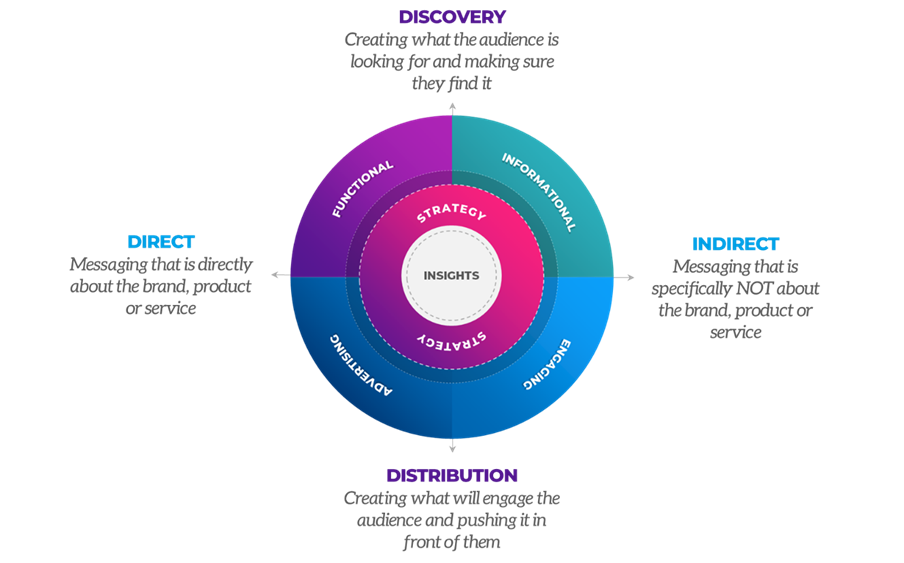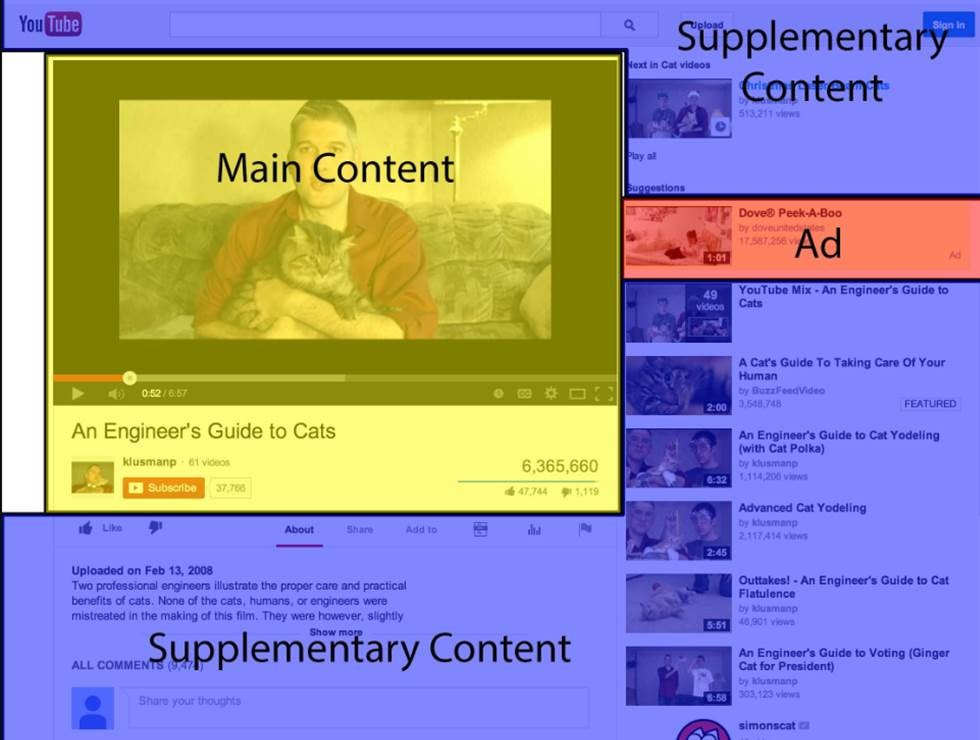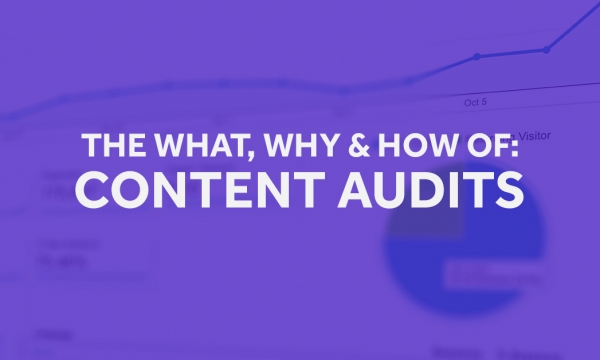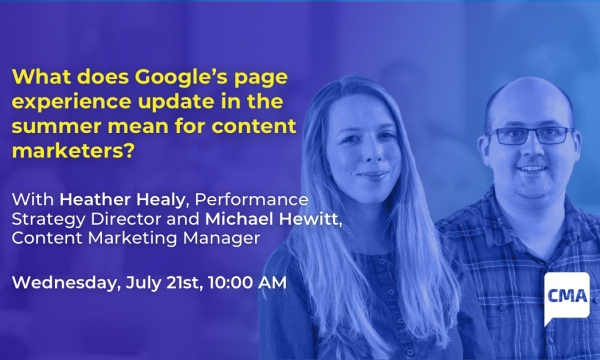How will Google’s recent EAT update change the way in which marketers approach their content strategy? The greater focus on expertise, authority and trust means that brands need to take a much bigger picture approach to how they communicate online.
Google's recent E-A-T algorithm update has sent shockwaves through the marketing industry, with some leading websites losing huge amounts of traffic almost overnight. As the dust is starting to settle, we reveal what you could and should be doing to ensure your site remains in the winners’ camp, using our Complete Content model.
The answer is simple, isn’t it? Create a high quality site that meets people's real-world wants and needs and you’ll reap the rewards – sky-high visibility, unrivalled traffic, sales or other. Perhaps. But as there’ve been some shock winners and losers following Google’s major mid-year algorithm update, it’s certainly worth pausing to consider the finer detail.
For any content marketer or brand manager interested in ensuring a site and its content is rated by the search engine giant, your essential starting point would be to read Google’s 164-page Search Quality Evaluator Guidelines.
But that’s a fair challenge, so to help you decipher what’s needed to meet these new and exacting standards, we’ve summarised the key takeaways and translated these into practical actions using our own Complete Content marketing model (which you can learn more about by watching our recent presentation at Search Leeds).
The evidence so far suggests that the 'broad algorithm update' has boosted the SEO ranking performance of sites that are high quality. To do that, Google's assessing several key factors to arrive at an overall Page Quality rating by looking at:
- The purpose of the page.
- Expertise, authority and trustworthiness.
- Main content quality & amount.
- Website information and information about who is responsible for the main content.
- Website reputation and reputation about who is responsible for the main content.
Using this rating system, the highest quality pages are therefore the ones that demonstrate expertise, authority and trustworthiness, and include plenty of great content. How that looks, depends on a site’s purpose, as Google points out that high E-A-T pages can include gossip columns, fashion retailers and forums. A simple comparison is between a financial services company – which would be expected to have industry accredited individuals creating content that’s accurate and regularly updated – and a forum about living with cancer where contributors require life experience and a desire to share helpful and positive content.
The key goal of Complete Content is to provide a clear framework to help brands align content to user intent and consumption – the content which works for someone actively making a commercial search in an 'I want to buy' micro-moment is likely to be very different from what works for someone in a passive moment when they're absent-mindedly flicking through Facebook in front of the telly.
It sets out the four fundamental types of content brands can use to engage with their audiences. And it does that by considering the simple concept that there are only two ways to put content in front of people; distribution, where you actively push your message to your audience through a blend of marketing communications channels, and discovery, whereby you make it as easy as possible for people to find your content organically through search.
And that similarly there’re only two ways for brands to talk to people:
- Directly – about your brand, products or services.
- Indirectly – about anything that ISN'T your brand, products or services.
That gives us four fundamental content types, each of which has a crucial role to play in meeting Google's latest content quality guidelines.

- Functional Content: Typically a site's product or service pages, an area which has always been a key focus for SEO practitioners. Google reminds us that it also includes other often overlooked content types, such as About Us, Contact Us and FAQs, including the Help Centre by My Protein.
- Informational Content: A site's useful, helpful, practical, actionable content – anything that's not explicitly about your brand, product or services, and is intended to be discovered via search, such as the "How to clean a patio" guide by Marshalls.
- Engaging Content: Content that doesn't explicitly promote your brand, and is designed to be pushed out to disrupt, grab and engage your audience, such as the American Road Trip planner by Hertz.
- Advertising Content: Content that explicitly promotes your brand, and put in front of people when they're not actively looking for it. In the context of Google's E-A-T update, we’re reminded that this includes onsite ads, and these are being evaluated as part of the user experience.
But alongside these four types of content, Google’s search quality guidelines also have three over-arching definitions of content, which it judges to slightly different standards and in slightly different contexts.
Main content, in simple terms, is what the page is all about and must be aligned to page purpose and search intent. Supplementary content is the content that supports the main content, whilst the definition of ad content is fairly self-explanatory.
Here’s an example from YouTube:

Because Google's 'broad algorithm update' is concerned primarily with assessing the quality of on-site content, it naturally focuses on how brands are using functional content and informational content. But engaging content and advertising content also have important roles to play in ensuring your site is well-optimised for Google's latest standards.
So how do those factors affect the four constituent parts of Complete Content?
E-A-T for functional content: A broader focus

Because functional content is about your brand, product and services, its purpose is to help people research, choose and buy. It's usually accessed via a commercial or brand search term. The bulk of functional content on your site is likely to be your product and service pages – the content which helps users understand your offer, helps them decide whether or not it's right for them, and which ultimately helps them buy.
As such, the latest information from Google confirms what good SEOs have known for years – that the primary job of the main content on product or service pages has to be about giving people what they want and need in specific commercial, or 'I want to buy', moments. It's explicitly NOT about writing screeds of irrelevant keyword-stuffed content onto a page in the hope this will somehow get your page to rank.
For example, here at Stickyeyes, we've created thousands of 'car hire + location' pages for car rental firm Hertz across the EU. Think about it – you've just booked a trip to London and you need a car. So you Google 'car hire London'. What is it you want and need from a site in this specific moment? Essentially you need information which will help you quickly and easily decide whether you want to book a car from Hertz. It's the key nuts-and-bolts information – price, availability, service levels.
So the main content on a product or service page has to be focused first and foremost on what the user wants in that search moment. Yes, you can include supplementary content to support that, but the page has to focus on giving the user exactly what they're looking for.
Google has also reinforced that content depth/length needs to be properly aligned to search intent and page purpose. If someone's obviously looking for a category page on a fashion site, you don't necessarily need hundreds of words of keyword-stuffed copy – you need enough to make sure they understand they're in the right place, to help them choose the product that's right for them, and to help them buy quickly and easily. That's likely to be much more about compelling imagery, video and potentially UGC content rather than traditional SEO fodder content.
The E-A-T update has several other important implications for functional content. While product/service pages have historically been the most important – and most scrutinised – from an SEO perspective, another form of functional content is now more important than ever. "About Us", contact information, customer service information, FAQs and other support content is something that now needs special focus from SEOs to ensure it explicitly validates the expertise, authority and trustworthiness of the site.
In simple terms, that means great website UX is more important than ever. As Google puts it, this kind of functional content needs to honestly and accurately explain who you are, what you do, your reputation (e.g. industry awards), and make it as easy as possible to give users a great experience.
This kind of content is often the domain of brand or UX teams, with limited input from SEO practitioners. Our advice is to review, audit and optimise this content to maximise your performance in a Google E-A-T world.
E-A-T for informational content: Are you really an expert?
Informational content is where the E-A-T update makes a big difference. For too long, brands have been churning out poor quality, badly researched content, based on a quick Google and a few minutes of effort. There is a huge gulf between that and 'proper' content.

Google is clearly seeking to reward content created by true experts – particularly in any areas which can impact people's happiness, health, financial stability or safety. In simple terms, that means you need genuine, reputable experts to be involved in creating your content. Ideally, they need to be authoring it themselves too.
On one hand, that's absolutely right – it makes absolute sense that you shouldn't take medical advice from someone who's not qualified to give it. But finding doctors who are also expert, experienced content creators is not easy or low-cost.
But don't panic – there’s a more practical way to achieve great content that also has very high levels of E-A-T. And it's something that's been around for 100s of years – quality journalism.
This latest update from Google makes traditional journalistic skills more important than ever for brands. At Stickyeyes, we often tell clients that anyone with Google and a keyboard can create content, but it takes much more than that to create truly great content. And trained, experienced journalists know exactly how to do that.
The principles of good journalism are exactly what Google is seeking to reward – it's about finding the experts and then turning their knowledge into compelling content:
- Find the right people to talk to.
- Allow them to speak in their own words – quoted or as the author.
- Properly research, confirm and reference every assertion.
- Seek alternate view points for a balanced report.
- Create content people actually want and need.
- Use all of the above and you’ll build E-A-T.
Another key point in the Google guidelines is the requirement for sufficient content length and depth in this Informational Space. We've already seen plenty of evidence that Google is favouring in-depth content over 'snackable' content (which works much better from an engaging content perspective). The way we approach this is by benchmarking the content depth of top-ranking pages in specific niches and then ensuring our own content is in the same area. Of course, content should never be longer than it needs to be, but in the same breath, it needs to be deep and rich enough to meet someone’s specific wants and needs in a specific moment. The precise length depends entirely on the subject matter.
The other key takeaway from an informational content perspective is ensuring you're using main content, supplementary content and advertising content appropriately. This means clearly separating informational content (e.g. useful, helpful, practical, actionable content) from functional or advertising content (e.g. content that's trying to sell stuff) ensuring the latter doesn’t get in the way.
In our experience, many brands try to blur the lines between these in a bid to convert informational searches into direct sales. It's clear that Google doesn’t like this practice. Informational content on an informational page should serve the singular purpose of meeting the user's search needs. So if someone searches for 'how to lay a patio', the main content should show users how to lay a patio, not try to sell them the tools and materials necessary to do it. There's no reason a well-designed web page can't combine informational main content with effective advertising content – but this is when you need smart content design to keep it apart.
Our informational content hub for hairstyling company ghd is a great example of how this can work. The main content is all about how to achieve certain hairstyles, but advertising content about the products required to get the look is also included on page – just not in the body copy. And it has worked – it ranks well and converts well from an assisted and direct conversion POV.
Using engaging content to boost E-A-T
As we've touched on, reputation matters more than ever, and there's a strong suggestion from Google that a wider range of offsite reputation touchpoints than ever are being considered by the algorithm. There's long been a debate about the importance of citations as opposed to links and it's our view that Google's AI-powered semantic understanding is now advanced enough to get a very solid grip of your brand's authority and reputation without the need for a physical link.
As such, there's still a very clear need for outreach for SEO – getting your brand covered, talked about and, yes, linked to. The key point though is that it's quality and relevance that matters most. To get a positive mention on a highly authoritative site that's highly relevant to your business is exactly what you need to do – to build a bucket load of links on random, low-quality, irrelevant sites is not.
Google’s also made it clear that when it comes to measuring a site’s reputation it’ll take an even broader approach that citations – and will consider what customers and experts have to say about you and your product by evaluating reviews and awards.
Conclusion
More than ever, the quality of what you create will impact your site's ability to rank. That means brands need to move away from cheap, thin content and really focus on creating content that offers real value to customers in all the moments that matter – and Complete Content offers a good framework for achieving that.
So, if you're not following these key best practice guidelines, don't expect your site to rank well:
- Make search intent the first thing you think about – give your audience what it wants and needs.
- Create high-quality product/service pages that are focused on helping users research, choose and buy.
- Make sure your About Us, FAQ and Customer Support content explicitly communicates your Expertise, Authoritativeness and Trustworthiness.
- Get experts involved in your content creation – as authors, as validators, as interviewees.
- Research your content properly and include references to authoritative, expert sources.
- Ensure your content is the right depth to do the job it needs to – shopping content can be short, informational content needs to be long.
- Separate informational content, functional content, engaging content and advertising content – this can be done with smart design.
- Stop trying to sell on every page – and where appropriate demonstrate that you want to help.
- Outreach and high quality links still matter, but consider how people are talking about you in other ways – such as awards and reviews.
Want to learn more? Download our Complete Content guide to see how you can apply these principles to your content marketing and search strategy.



